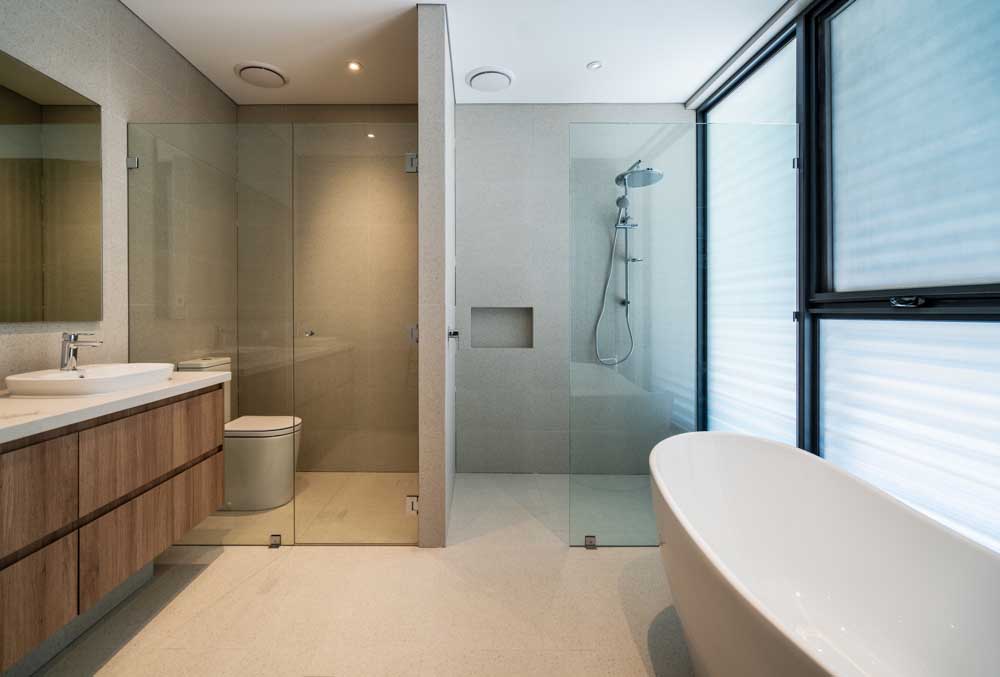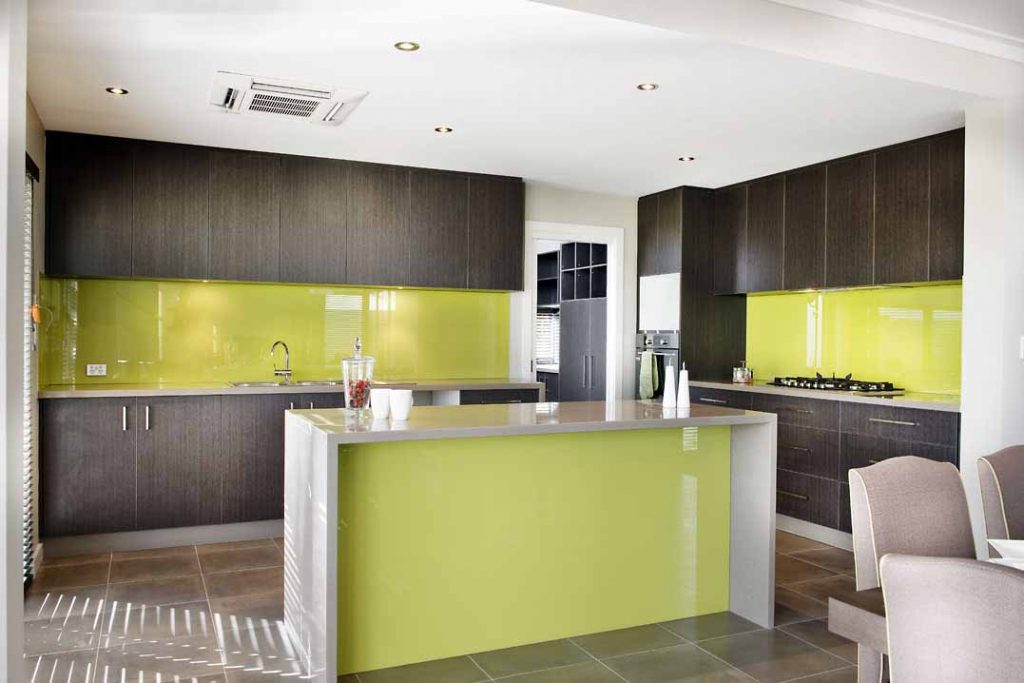There are many names given to these glass types which confuses most people, this confusion is increased by companies who have invented their own ‘brand’ names for them. If we want to discuss the properties of low iron v clear glass we must first try to establish some clarity by defining each.

Clear Glass
What is Clear Glass?
Clear glass, also referred to as ‘Float Glass’ ‘Annealed Glass’ or ‘Standard Glass’ is the most common glass that we see in everyday life, used in homes and construction. Despite being called ‘Clear’ this type of glass is actually less clear than Low Iron Glass. Clear glass has a light green tint.
Where is Clear Glass Used?
Clear glass is used in homes for windows, doors, mirrors and furniture such as tables and shelves.
We use clear glass in a selection of our products such as kitchen splashbacks, shower screens, wardrobe doors and mirrors. When used as a splashback or showers screen, our clear glass is put through another process to add strength. This is a heating process called toughening or tempering. This is then classified as Toughened Clear Glass which meets Australian Standards for Safety Glass.
How Thick is Clear Glass?
This depends upon application. For example, clear glass used in window panes for the home is usually 4mm thick.
Glass used in our sliding robe doors is 5mm thick and backed with vinyl for safety.
Fully framed shower screens can utilise 5mm thick glass because the frame adds rigidity and support, semi-frameless shower screens generally use 6mm thick glass.
Our frameless shower screens are generally 8mm or 10mm thick.
Splashback glass is 6mm thick. All of the glass used for our splashbacks and shower screens is toughened.

Low Iron Glass
What is Low Iron Glass?
Low iron glass is glass made from a special silica sand that has naturally lower iron levels than that of clear glass. It’s this lower iron content that provides the colour neutrality and all but eradicates the greenish tint that’s found in clear glass.
Where is Low Iron Glass Used?
Low iron glass can be used as an alternative to clear glass in most applications.
Why Choose Low Iron v Clear Glass?
What are the pros and cons of each type of glass?
The benefit of using low iron glass is without doubt it’s colour neutrality. We use low iron glass on a number of our coloured splashbacks. These colours (typically lighter shades) are impossible to achieve with clear glass due to it’s inherent greenish hue.
We also offer a colour matching service for splashbacks which must also use low iron glass as this offers the most neutral base point.
The benefit of using clear glass is cost. Low iron glass is slightly more expensive but depending on your requirement, may or may not be needed.
There is of course an aesthetic aspect to this choice which is personal preference. In most instances the slight greenish hue of clear is unnoticeable or irrelevant, and in some cases preferred.
If you’d like to know more about these types of glass and which one would best suit your application, call us now for further information and pricing.

